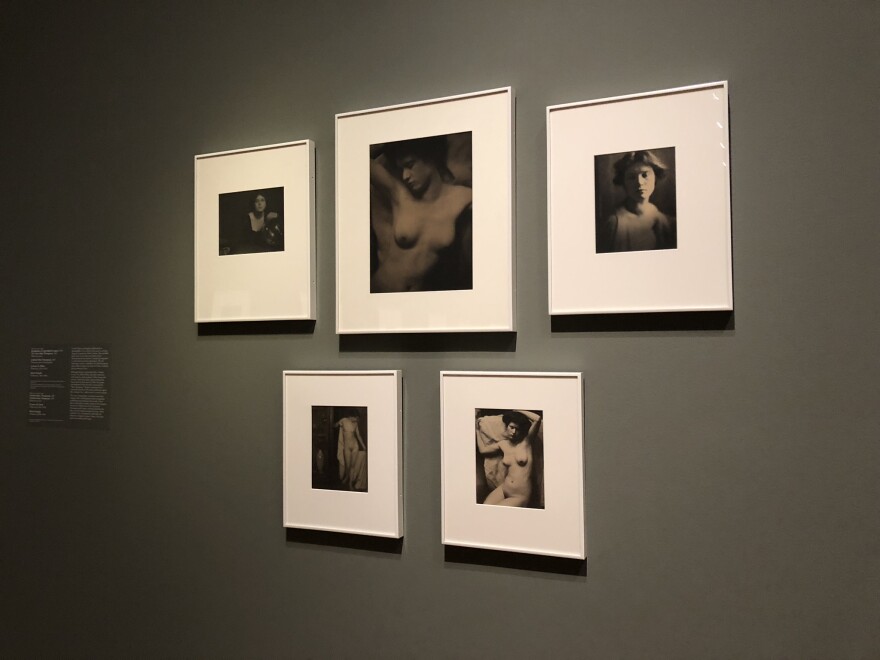Ohio native Clarence H. White is considered one of the founding fathers of artistic photography. His work is now being celebrated at the Cleveland Museum of Art. On this Week’s State of the Arts, WKSU’s Mark Arehart explores the new exhibit "Clarence H. White and His World: The Art and Craft of Photography, 1895–1925."
Editor's Note: This story includes art containing images of the naked human form.
"Clarence H. White is Ohio’s most famous and important historic photographer. And not too many people here really know who he is," Curator Barbara Tannenbaum said as we walked through the exhibition filled with White's ghostly silver photos. Many are more than a century old.
"He actually made Newark, Ohio a hotbed of radical photo activity around the years right around 1900. It was a time when most people did not consider photography an art form."
White was part of the Pictorialist movement, arguing that photography had a place in fine art.
"Clarence White was at the heart of that movement, along with some other major figures like Alfred Stieglitz of New York (and) Edward Steichen. And so he really had a hand in changing the course of photography in America and in the world," Tannenbaum said.
Starting Out
Teaching himself photography in Newark, White worked around his day job as an accountant for a wholesale grocer, taking low-light photos in the early morning and late evening hours. His mostly female models were often dressed in flowing gowns, holding contemplative poses.
"But they’re always very still. It hearkens back to an ideal of an era in the agriculture days or a time of leisure for women that never really existed."
These soft focused, almost ghostly photographs mirrored what the American impressionists of the era were painting.
"This was one of the ideals of art at the time, it was to take you away from the present. Not to put you into the present, but to take you away from the present. And there was the whole concept of creating art that was timeless."

Making the Images His Own
White primarily used a process of platinum photography which allowed him to alter his images.
"(Pictorialist photographers) didn’t have to capture what was in front of them. They could create whatever they wanted in their mind. Using the camera and then various techniques of development, manipulation, hand alteration, drawing on the work. So it was really for them a medium not of fact, but imagination if it was going to be art."
In 1904 White quit his job to become a full time photographer. "He took magazine and illustration and book illustration commissions, and also travelled around doing portraits."
In 1906 White moved to New York City, in part to continue a collaboration with Alfred Stieglitz. Before the pair had a falling out in 1912, they worked on a series of nudes, pushing their photography further into the realm of fine art. But at that time you couldn’t feed a family that way.
"He was doing some commissions, but it wasn’t quite paying the bills. So he got a job teaching. And that interested him very much in this whole idea of passing along this notion of photography and training people not as technical experts or commercial photographers, but teaching people how to think about photography as a medium and as an art from."
Teaching His Craft
In 1914 White established one of America’s first photography schools helping to train the next generation of artists.
"And it really became the first place to get a wide-ranging, artistic education in photography that included theory, processes and composition being taught by painters."
At the age of 54 Clarence H. White died suddenly of a brain aneurysm while leading students on a photography trip to Mexico City.
He left behind an indelible mark on photography as we know it today.
"It’s important, I think, that Ohioans recognize his contributions and the fact that we were once the center of radical photography."











